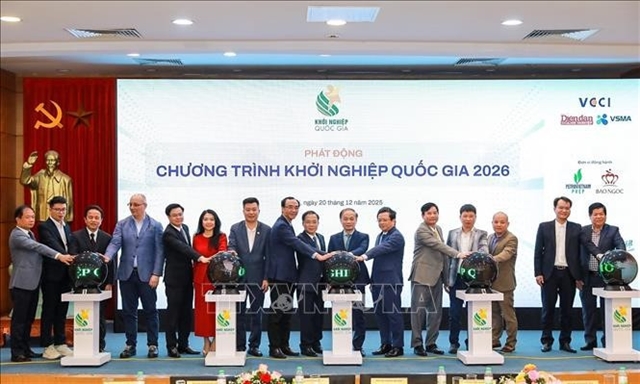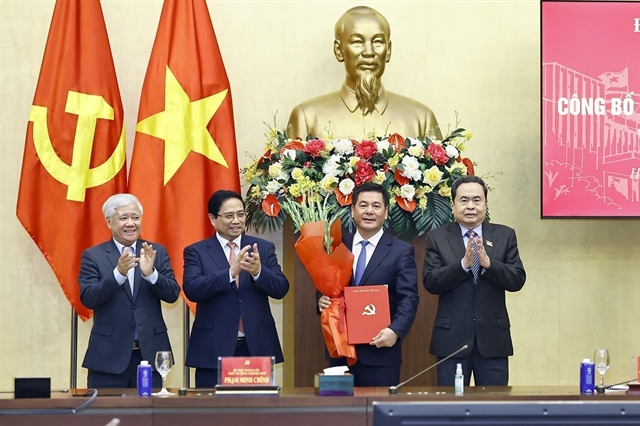 Economy
Economy

Việt Nam’s trade balance posted positive US$2.77 billion in July, lifting total trade surplus to $8.23 billion in the first seven months of 2020, the latest data of the General Department of Việt Nam Customs revealed.

|
| A worker of Samsung Electronics Vietnam checks a mobile phone. In July, telephones, mobile phones and parts surpassed computers, electronic products and components to become the group with the highest export value of the country. — VNA/VNS Photo Anh Tuấn |
HÀ NỘI – Việt Nam’s trade balance posted positive US$2.77 billion in July, lifting total trade surplus to $8.23 billion in the first seven months of 2020, the latest data of the General Department of Việt Nam Customs revealed.
This number was much higher than the General Statistics Office (GSO)’s estimate of $6.5 billion in late July and a record high for a seven-month value.
This was also Việt Nam’s third month in a row recording a trade surplus despite the adverse impacts of the COVID-19 pandemic on the economy.
Total import-export turnover in July was $46.96 billion, up 8.5 per from June, of which export value increased 10.2 per cent to $24.87 billion and imports rose 6.7 per cent to $22.09 billion.
Ending July, Việt Nam’s export value reached $147.6 billion, up 1.5 per cent year-on-year while import value was $129.2 billion, down 3 per cent year-on-year.
Top export products include telephones, mobile phones and parts; computer and electrical products and components; machinery, equipment and spare parts; textile; and footwear.
In July, telephones, mobile phones and parts surpassed computers, electronic products and components to become the group with the highest export value of the country.
Samsung launched a new Galaxy Note20 model which was officially sold globally this month.
Since the outbreak of COVID-19, Việt Nam’s trade activities have encountered many difficulties. Thus, a high trade surplus is seen a big success of the country which will have a positive impact on foreign exchange rate, foreign exchange reserves, boosting confidence for businesses to expand production.
Production decline
On the other hand, high trade surplus may be worrisome as this was a result of declines in imports – a sign of production stagnation.
“Trade surplus soared because domestic production declined as the country narrowed imports of input materials,” a Ministry of Planning and Investment leader told Báo Đầu tư (Investment) newspaper.
Việt Nam usually relies on imports of input materials for production, yet imports of these product groups in the first seven months of 2020 were down 3 per cent.
Data showed imports of fabrics, steel and other materials for textile and footwear declined by more than 10 per cent.
According to a report for the Government, the Ministry of Planning and Investment said in the last seven months, imports of material groups which accounted for 93.5 per cent of total import turnover were down 2.6 per cent to an estimated $130.25 billion. Meanwhile, imports of consumer goods decreased by 7.3 per cent to $9.08 billion.
GSO last month also reported slow growth in industrial production with the July index was estimated to increase by 3.6 per cent over June and by 1.1 per cent year-on-year.
Between January and July, industrial production expanded just 2.6 per cent year-on-year, much lower than the 9.4 per cent growth in the same period in 2019. Notably, 20 of 63 provinces and cities, including HCM City – the biggest production hub, witnessed a sharp decline in the industrial production index.
“Most firms in the manufacturing industry had to cut staff and reduce wages due to stagnating production,” said Minister of Planning and Investment Nguyễn Chí Dũng.
In the future, to facilitate export activities, the Ministry of Industry and Trade is planning to implement a series of solutions such as promoting trade through e-commerce; strengthening information about free trade agreements; continuing to cut unnecessary import and export procedures; and requesting the Vietnamese trade services abroad to seek new markets for Vietnamese goods.
Việt Nam has targeted $300 billion in export value for the whole year.
The ministry will announce the list of reputable exporters in 2020 on August 20. This is one of the important trade promotion activities, aiming to facilitate foreign partners to explore and promote trade with Vietnamese enterprises. — VNS




